Expert Wind Damage Claims
in Houston, TX
Hurricane and straight-line wind damage specialists. Houston's coastal location means powerful winds that tear off shingles, lift flashing, and cause hidden damage. We've documented 1,500+ wind claims - insurance pays, you pay only your deductible.
Why We're Houston's Wind Damage Experts
Over 1,500 successful wind damage claims processed
Gulf Coast Wind Expertise
Houston's coastal location brings unique wind patterns - hurricane remnants, tropical storms, and severe thunderstorm straight-line winds. We understand how these different wind events damage roofs and what insurance companies expect to see documented.
Hidden Damage Detection
Wind damage isn't always obvious from the ground. Lifted shingles may look fine but are now vulnerable to the next storm. We inspect seams, valleys, ridges, and edges where wind hits hardest to find damage adjusters often miss.
Documentation That Gets Approved
Wind claims require proving wind speeds exceeded policy thresholds. We obtain weather data, photograph damage patterns consistent with high winds, and document everything in the format insurance companies accept. 95% approval rate.
Time-Sensitive Response
Wind-damaged shingles worsen quickly. One lifted shingle becomes five after the next rain. We respond within 24 hours to document damage before weather worsens it, and we tarp if necessary to prevent leaks while waiting for insurance approval.
Direct Insurance Billing
Once approved, you pay only your deductible. We handle all billing with your insurance company, including supplements if the initial estimate doesn't cover all necessary repairs. No surprise costs or hidden fees.
Hurricane-Rated Materials
After wind damage claims, we often recommend (and insurance covers) upgraded shingles rated for 130+ mph winds. These cost more initially but reduce future damage risk and may lower your premiums 10-20% ongoing.
Our Wind Damage Claim Process
From damage discovery to insurance approval - we handle everything
Wind Damage Assessment
We inspect all wind-vulnerable areas - roof edges, ridge caps, valleys, and flashing. We look for lifted/creased shingles, exposed nail heads, torn underlayment, and damage to vents/turbines. You get photos showing exactly what's wrong.
Weather Data Verification
We obtain NOAA weather data showing wind speeds on the date of the storm. This proves conditions exceeded policy thresholds (typically 50-70 mph). This data supports your claim and counters any adjuster questions about whether winds were strong enough.
Insurance Coordination
We meet with your adjuster, review our findings, and ensure all damage is documented. Wind damage often extends beyond what's visible - we ensure they check underlayment, decking, and edge metal that may be compromised even if shingles look intact.
Complete Restoration
Once approved, we complete repairs using wind-rated materials. If only partial replacement is approved, we explain why and ensure a quality repair. If full replacement is approved, installation takes 1-3 days. You pay only your deductible.
Recent Wind Damage Claims - Houston Area
Real projects from Houston homeowners who trusted us with their insurance claims
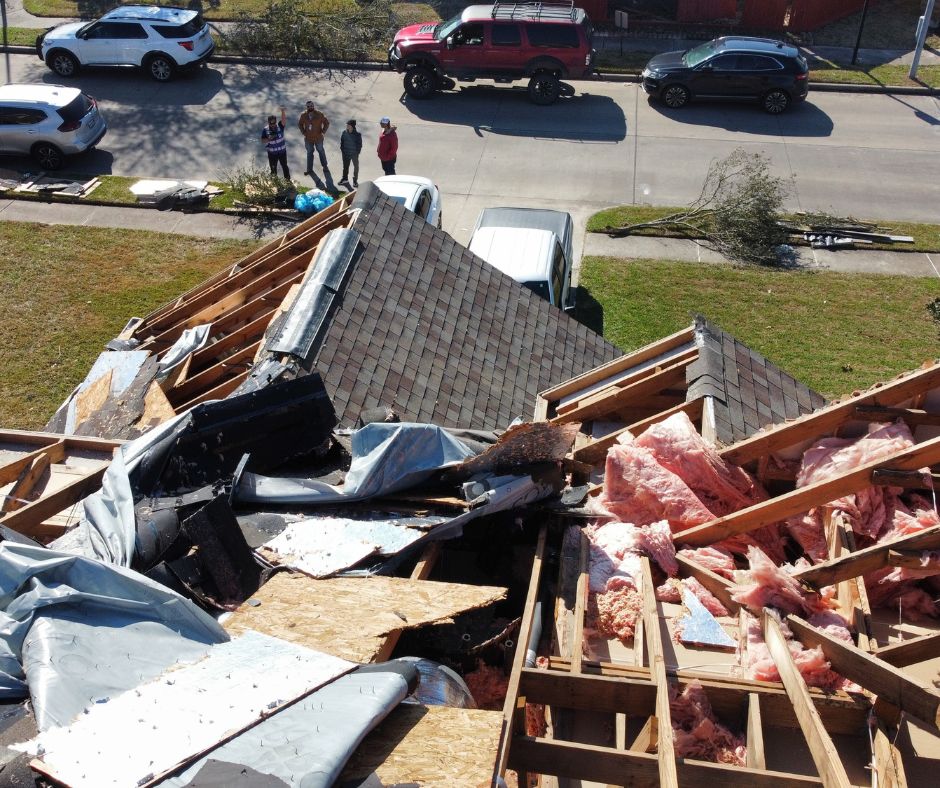
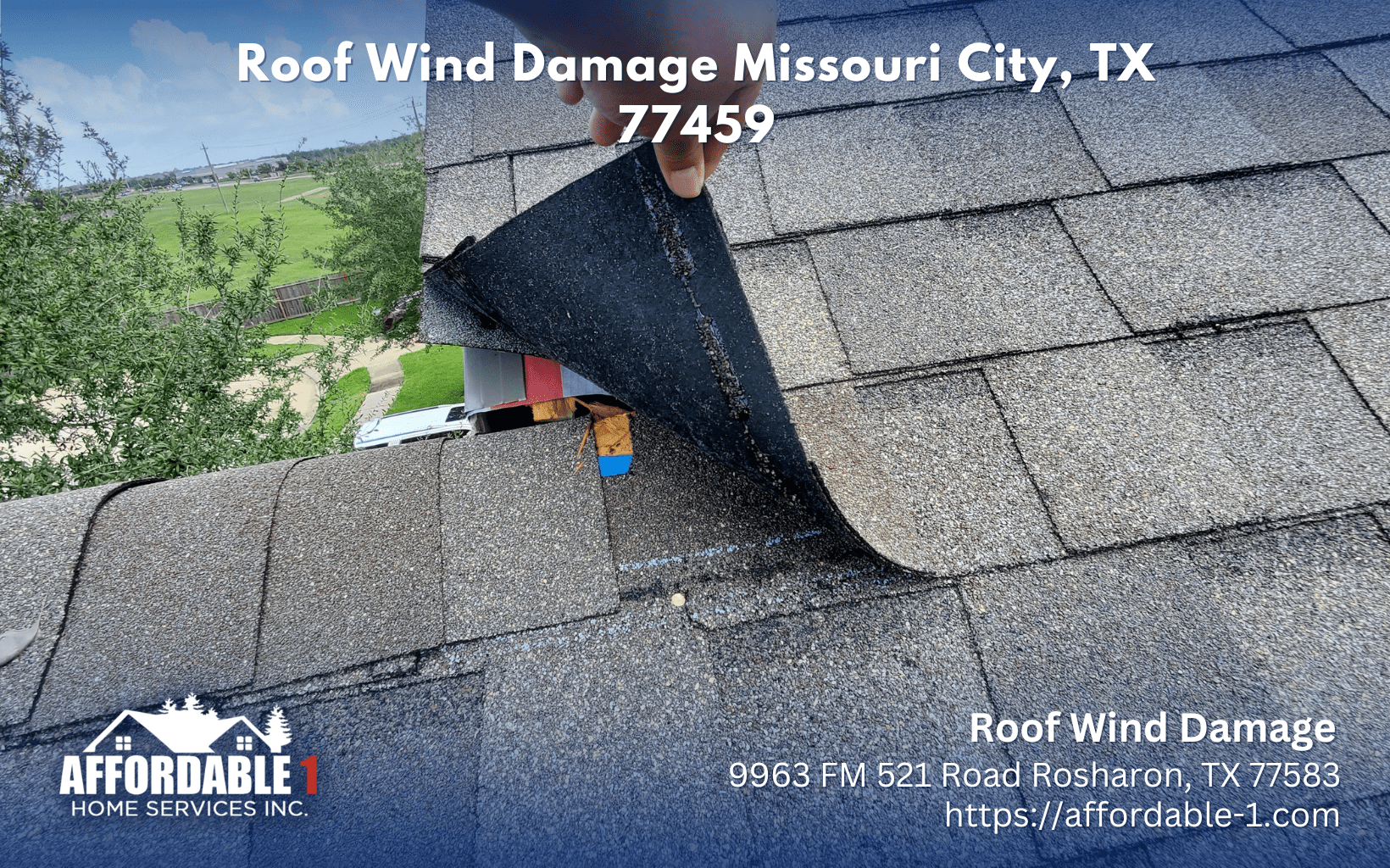

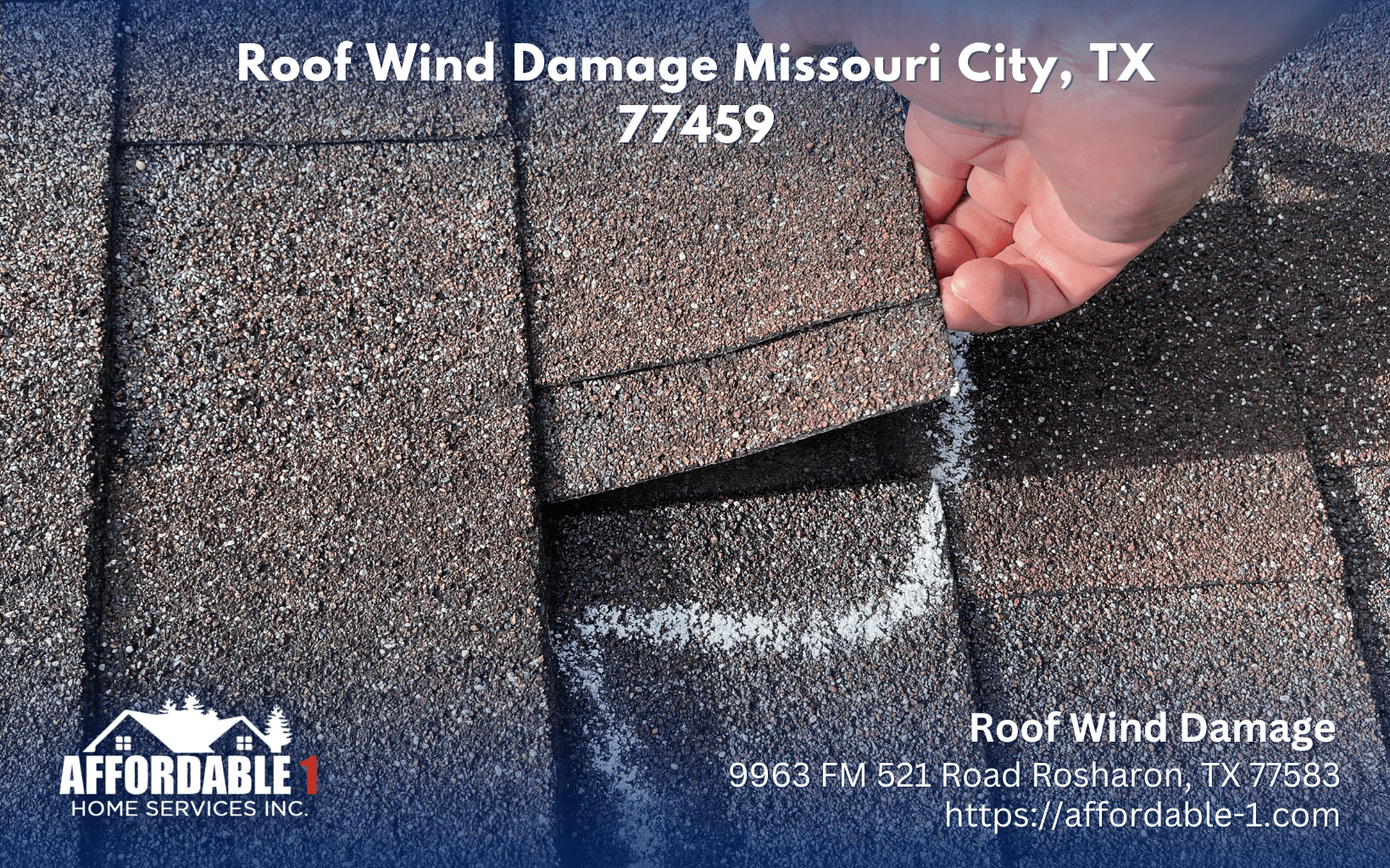
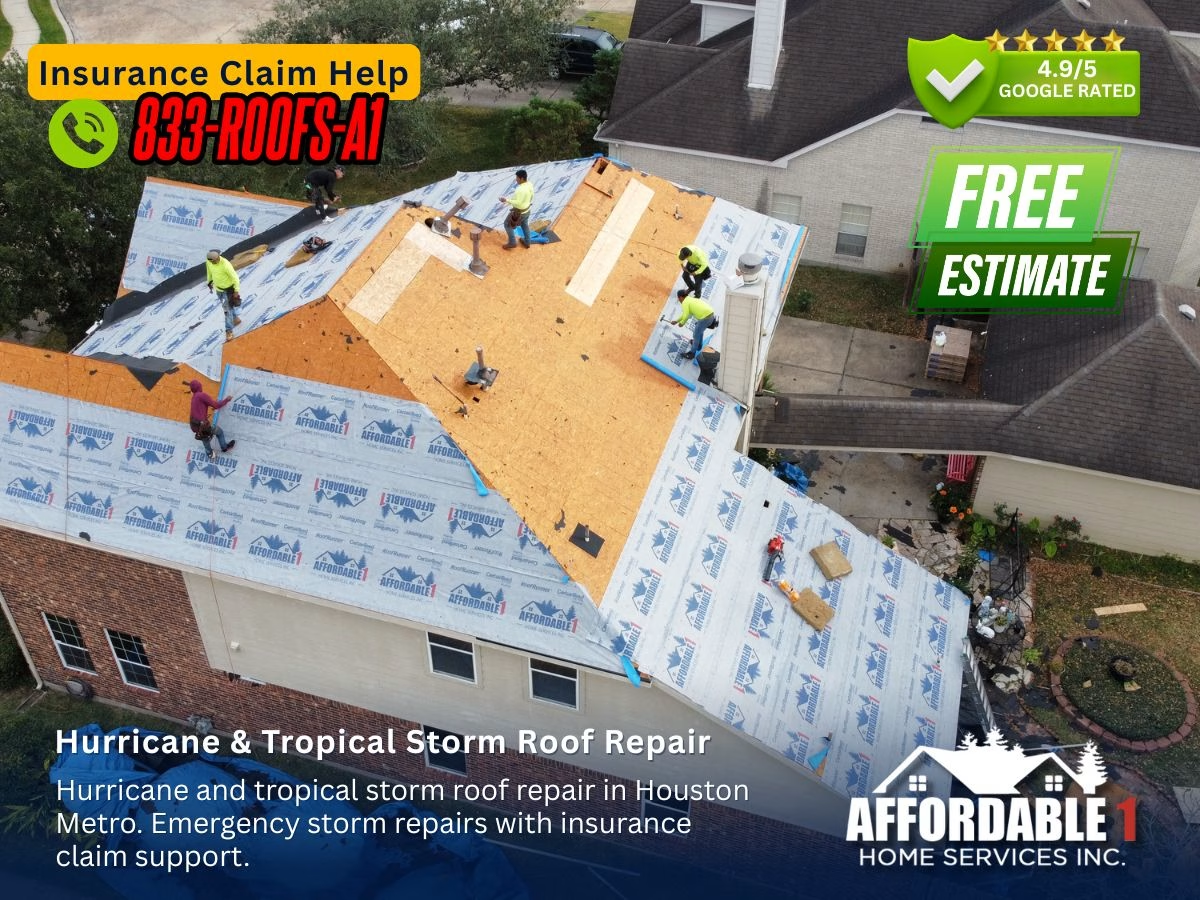
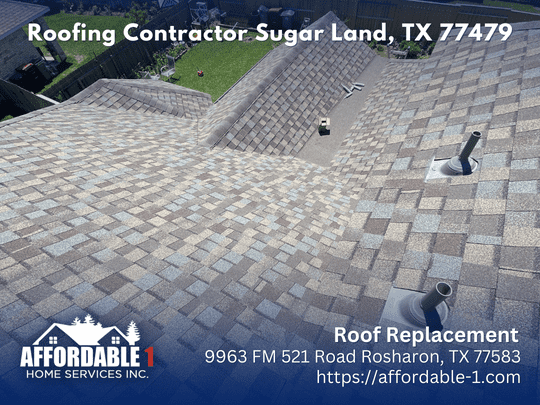
Get Your Free Wind Damage Inspection
Fill out the form below and we'll contact you within 24 hours
Wind Damage Claim FAQs
Get answers to common questions about wind damage and insurance claims
How do I know if I have wind damage?
From the ground: look for missing shingles, lifted edges, or shingles that look crooked/wavy. On the roof: look for creased shingles (bent from wind lifting them), exposed nail heads, lifted ridge caps, or damage to roof penetrations like vents. After major wind events (tropical storms, severe thunderstorms with straight-line winds), if neighbors are getting roofs replaced, you likely have damage too. Houston's winds are strong enough to damage roofs even without hurricanes - severe thunderstorm winds of 60-70 mph are common and sufficient to cause claimable damage.
What wind speed causes roof damage?
Standard asphalt shingles are typically rated for 60-110 mph depending on quality and installation. Winds above 50-60 mph start causing damage - lifting shingle edges, removing granules, and creating creases. Hurricane-force winds (74+ mph) cause severe damage. Houston sees 50-70 mph straight-line winds during severe thunderstorms multiple times per year. Even if not hurricane-strength, these winds exceed the stress thresholds that shingles are rated for, especially if your roof is 10+ years old and shingles have become brittle.
Will insurance cover wind damage?
Yes, if you have wind coverage (most TX policies do). Important: Some coastal policies have separate wind/hail deductibles (often 1-2% of home value rather than flat $1,000-2,500). Check your policy. We document wind speeds from NOAA data and photograph damage patterns consistent with wind (shingles lifted in prevailing wind direction). Insurance covers wind damage but not wear-and-tear - we help distinguish between the two so your claim doesn't get denied for pre-existing conditions.
Should I file a claim for a few missing shingles?
Honest answer: It depends on your deductible and total damage. If you have 5 missing shingles and a $2,500 deductible, repair costs won't exceed your deductible - don't file. But here's the catch: visible missing shingles often indicate broader damage. We've inspected roofs where homeowners saw "3 missing shingles" but we found 40+ lifted/creased shingles and compromised flashing worth $8,000-15,000 in repairs. That's why free inspections matter - we assess the full scope before you decide whether to file. If it's truly minor, we tell you honestly. If it's extensive hidden damage, filing makes financial sense.
How long do I have to file a wind damage claim?
Most Texas policies give 1-2 years from date of loss. BUT - you need to identify when the damage occurred. After Hurricane Beryl (2024), we documented hundreds of claims. If you don't file within a reasonable timeframe and damage worsens, insurance may argue the worsening isn't covered. Best practice: File within weeks or months of a known wind event. We help determine the date of loss using weather records and damage patterns. If you're unsure whether damage is new or old, we can often tell based on exposed wood weathering, granule loss patterns, and how lifted shingles have weathered.
